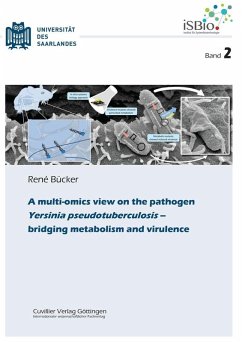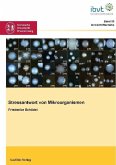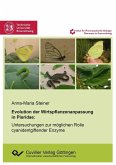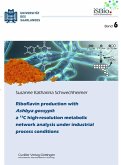Yersinia pseudotuberculosis is a human pathogen that causes acute intestinal and systemic diseases. This study investigated the link between pathogenic traits and the metabolic core machinery of Y. pseudotuberculosis using a systems biology approach: the integration of gene expression profiles with metabolic pathway fluxes in the wild type and virulence regulator mutants. The absence of specific virulence regulators particularly perturbed fluxes and gene expression of pyruvate metabolism and tricarboxylic acid cycle, suggesting an involvement of this metabolic node in the virulence management system. Mutants, genetically perturbed in regulators of this metabolic branch point and one of its central enzymes, showed a significant reduction of virulence in an oral mouse infection model. This revealed the pyruvate-TCA cycle node as a focal point for controlling host colonization. Flux rerouting was also identified as response to applied antibiotic therapies. The examination of Yersinia’s fine-tuned adaptation was expanded to temperature, an important infection parameter, using a continuous culture with advanced temperature control to mimic the infection process. The virulence regulator RovA, known to respond to temperature and to control metabolic, stress, and virulence genes, was quantified by Western blot analysis and fluorescence-activated cell sorting. RovA showed a bistable behavior that generally maximizes survival by heterogeneity.
Dieser Download kann aus rechtlichen Gründen nur mit Rechnungsadresse in A, B, BG, CY, CZ, D, DK, EW, E, FIN, F, GR, HR, H, IRL, I, LT, L, LR, M, NL, PL, P, R, S, SLO, SK ausgeliefert werden.









